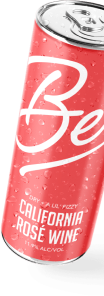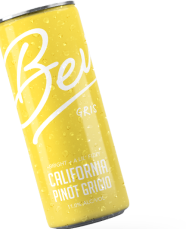
Just getting started drinking wine? Work in the alcohol industry? Whatever Google search has lead you here, you are looking for more information about wine. Because we receive so many questions about the basics of wine, we decided to put together a thorough wine guide that contains all of the basic wine information you might want to know!
Wine Basics

What Is Wine
Wine is an alcoholic beverage made from fermented grape juice. While any fruit is capable of creating wine, grapes are the most common. Therefore, you can assume any bottle of wine is made from grapes unless its label says otherwise.
The grapes utilized to produce wine are different from regular table grapes. Wine grapes are smaller, have more seeds, and typically are noticeably sweeter. For most wines, their grapes originate from a single species of vine.
Origins
While you might expect wine originates from France or Italy, two countries famous for their wines, wine has a more surprising motherland: West Asia. Evidence implies wine originated from West Asia, aka ‘The Middle East,’ with ancient production dating back between 6,000 BC and 4,000 BC. Today, wine grapes are grown everywhere from Old World wine regions like France, Italy, Spain, and Portugal to New World favorites such as California, Australia, and Chile.
Red Vs White

Aside from the apparent color differentiation, the fundamental distinction between red and white wine is how they are created, specifically their fermentation process. White wines are made from white or sometimes even black grapes. Then, the juice is separated from the grape's seeds, and skin and only the grape juice is used to make the wine.
In contrast, winemakers produce red wine from both black and red grapes rather than white grapes. Additionally, the grape skins and seeds are not removed as they are in white wine. Instead, they are kept inside the stainless steel vats with the juice while they ferment. As a result, the skin and seeds create the color and richer flavor in red wines.
Because of how they are produced, there are some apparent differences in their taste, texture, and how you should serve red and white wines.
Taste And Texture
White wines are more acidic, while red wines have more tannins. Confused? Don't worry, here's what you should know.
The truth is, it can be challenging to interpret wine tannins from wine acidity even though they are entirely different. Tannins are chemical compounds that fluctuate in size and shape and attach to proteins in your mouth. They create an astringent and occasionally even bitter, drying sensation. Tannins are found naturally in items like tea, coffee, chocolate, and wine. The tannins in wine come from stems, skins, and seeds of grapes. Therefore, based on how white and red wine is made, red wine has more pronounced tannins than white wine. However, because oak barrels are occasionally utilized for aging, they can also impart tannins into white wines.
While also a compound in wine, acid imparts a freshness that causes salivation instead of imparting bitterness. While tannins are found in some wines, acidity is in all wines, but the amount differs. A structural component, acidity balances sweetness, alcohol, and tannins bitterness. However, acidity is a fine line, too much can make a wine taste tart, and too little can make a wine cloying. For a wine to be delicious and drinkable, the acidity should be well-balanced.
The “Chill” Effect
Temperature plays a crucial role in wine's flavor and aroma. If wine is served too warm, you might be overcome with a rich, alcoholic taste and bitterness. In contrast, if wine is served too cold, you won't be able to fully enjoy your wine's acidity, fruit structure, or sweetness because the cold will overwhelm these elements. But, when served at the right temperature, your wine will be incredible! It will allow you to discover its aroma, body, and flavor as it was intended to be consumed!
While red wines like Pinot Noir are generally served at something closer to “room temperature”, a white like Pinot Grigio is served at a much cooler temperature.
Typical Dishes To Pair With
Wine and food pairings are a popular topic and considered art to many people. The main intention of pairing wine and food is to heighten the dining experience. Many pairings emerge from a region's cuisine and wine merging due to being created in the same location. Is it that big of a coincidence that Italian food tastes better with Italian wine?
From websites to books to magazines, there are many places you can study and learn how to perfect wine and food pairings. At lavish restaurants, you might even find a sommelier whose entire job is to explain how to best pair your wine and food. But if you're looking for the basics, we have three suggestions:
Our first suggestion is to pick wine labels you'd want to drink regardless of the food. Why? Because if you burn or make a mistake while preparing your meal, at least you'll be able to enjoy your drink!
Our second suggestion is to create balance. The wine should have similar flavor intensity as the food, which is why most people advise pairing red wines with boldly flavored meat and white wines with lighter intensity foods, like fish and chicken.
Our third suggestion would be to distinguish the most powerful character in the dish, whether it's the sauce, seasoning, or cooking method, and find a wine that matches that.
Types Of Wines

Sparkling Wine
Sparkling wine is sparkling, duh! Sparkling wine has bubbles and is carbonated. There are five main varieties of sparkling wine, and they vary based on where they are produced. However, most of them share high acidity and bubbles. The leading five are champagne, prosecco, cava, sekt, and rose.
Light-Bodied White
Light-bodied white wines are typically 12.5% alcohol or less. These often include Pinot Grigio, sweet Riesling, Moscato, and Sauvignon Blanc.
Full-Bodied White
Medium white wines have an alcohol percentage of 12.5% and 13.5%. These comprise Chenin Blanc, Chardonnay (unoaked), Pinot Gris, and dry Riesling.
Light-Bodied Red
Like light-bodied white wines, light-bodied red wines have less alcohol with typically less than 12.5 percent. They also have fewer tannins than medium- or full-bodied wines and include wine varieties, Pinot Noir, Beaujolais (AKA Gamay), and Barbera.
Medium-Bodied Red
Medium-bodied red wines tend to have between 12.5 and 13.5 percent and, as you likely can guess, have more tannins than a light-bodied red wine but still less than a full-bodied red wine. Merlot, Shiraz, Tempranillo, and Cabernet Franc are all examples of Medium-Bodied red wines.
Full-Bodied Red
All red wines with more than 13.5 percent alcohol are considered full-bodied. Cabernet Sauvignon, Zinfandel, Malbec, and Syrah are all examples due to their complex flavors and richer mouthfeel.
Aromatic (Sweet) White
The interpretation of sweet wine is flexible in the world of wine. But, customarily, sweet wine or dessert wines comprise more than 14% alcohol.
Rosé Wine
Rosé wines can be either sweet or dry, but typically, they are more on the dry end of the taste spectrum. Rosé has a similar flavor profile of light red wine but is brighter and crisper both in its soft pink color and fruity taste.
The primary flavors in rosé are red fruit, flowers, citrus, and melon finished with a pleasant green taste. Bev offers a crisp and dry rosé with fresh strawberry and raspberry aromatics, paired with a crisp white peach finish.
Dessert Wine
On a technical side, dessert wines contain more than 14% alcohol, which is a relatively high alcohol content. However, dessert wines are so named because they are enjoyed during or after dessert. To create a dessert wine, winemakers stop the fermentation process before yeast transforms all of the grape sugar into alcohol, leaving a deliciously sweetened wine, which holds up well with those sugary post meal treats.
How To Serve, How To Taste

The four basic actions practiced by sommeliers to refine their palate and hone in on their expertise consist of look, smell, taste, and think. The essential thing about excellent wine tasting is staying in the moment and focusing on your senses: sight, smell, and taste. Of course, it also helps if you have wine tasting notes to go off of, but regardless, it's fun either way.
Learning how to perfect wine tasting is a skill worth learning, and therefore, we dedicated a blog on how to master it here.
The Right Glass
Want to know the truth about wine glass shape and its influence on wine taste? In actuality, wine glasses have not shown they impact the taste of wine. The rumor is that in 1973, a Mr. Claus Riedel of Riedel glass company was attempting to sell more of his glasses. Therefore, he devised his Riedel Sommelier series, which comprised ten glasses he claimed were ideal glassware for several different types of wine. Riedel claimed the glass shape would support the drinker and experience the wine's aroma, while the shape would guide the wine to the specific parts of your mouth that would allow you to taste the glass of wine better. Fortunately for Riedel, sales skyrocketed.
However, in 2004, Ridel's claims were ridiculed. In a Gourment Magazine article, studies revealed that Riedel's claims were rubbish. So undeniably beautiful, his more oversized bowl red wine glasses and smaller bowl, narrow rim white wine glasses conclusively did not scientifically improve the wine experience.
Flavor Vs Taste
Believe it or not, flavor and taste are very different in the world of wine. Flavor provides the overall impression of the wine, its aromatics, taste, and mouthfeel. In contrast, the taste is how our brains integrate aromas, taste, and texture into an overall experience.
Final Toast (Overview)
What kind of wine you drink is up to you! How you choose to serve it is also up to you! Understanding different wine types may help you discover the wine regions and varietals that you like best, but there's no wrong way to sip on a nice Burgundy or a California Chardonnay. Just keep drinking wines that you enjoy, all you wine lovers out there.
SHOP BEV NOW




 MY COOLER
MY COOLER



